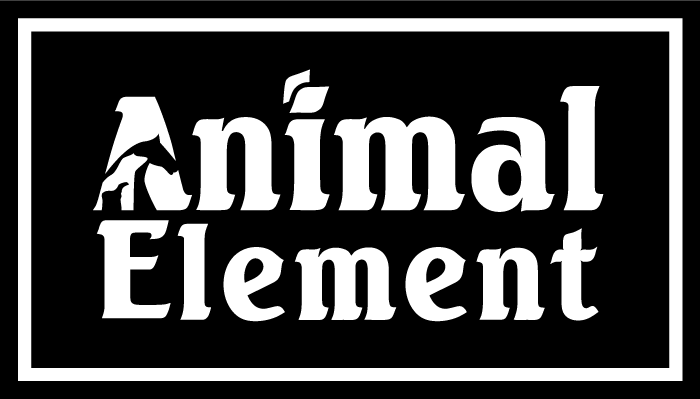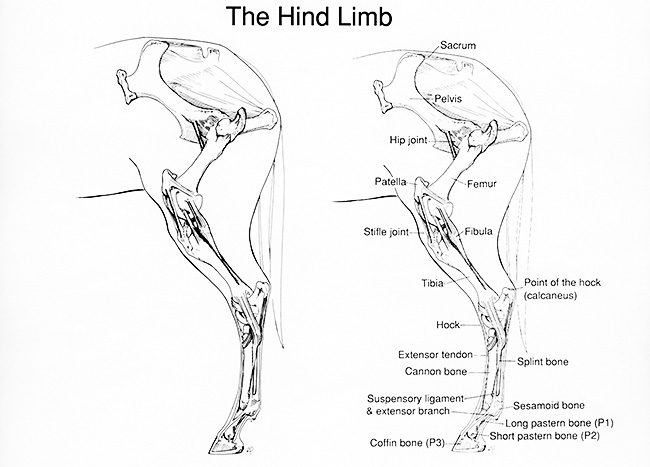Everything You Need to Know About the Stifle Joint & How to Keep It Healthy

Ahh stifle joint anatomy. If you’ve ever done a pre-purchase exam on a horse or taken them in for a soundness check from a trusted equine vet, then you know the stifle joints are often a point of extra thorough examination. The stifle joint is a major and complex joint in the horse’s body. It’s responsible for transferring power from the muscular back end to the lower back legs and getting horses over obstacles and through turns. Because of its function, it’s not surprising that stifle joint injuries are common in performance horses, especially in Western events like cutting, roping, and barrel racing. [1] In order to keep your horse’s stifle healthy and supported, it’s important to understand just how it works. Let’s dive deep into the stifle joint: how it works, how it can become injured, and how we can keep it healthy. Ready? Let’s go!
The Inner Workings of the Stifle Joint

Often referred to as the equivalent of the human knee, the stifle has the same parts and function as a human knee, but it is angled backward and able to lock. The locking mechanism enables horses to comfortably do the large amounts of standing that they do as grazing animals. The stifle is comprised of three bones; the femur, the tibia, and the patella (a kneecap in human anatomy), and two cartilage discs called menisci that act as a cushion between the femur and tibia. Three smaller joints: the femoropatellar, medial femorotibial, and lateral femorotibial are within the large joint, along with various ligaments that stabilize the joints and connect the bones. [2]
All of these moving parts allow the horse to flex and extend their hind legs, make quick turns, jump over obstacles, and move over flat land quickly. All pretty vital movements to a horse, but especially a performance horse. But with lots of moving parts, comes an increased risk of injury.
Common Injuries to the Stifle Joint

According to professor of equine surgery at Colorado State University, David Frisbie DVM, PhD, Dipl. ACVS, ACVSMR, roughly 40% of injuries in performance horses are in the stifle joint. [3] These injuries usually occur in the ligaments and tendons surrounding the joints, or in the menisci discs. Fractures to the femur, tibia, and patella are generally rare and caused by a traumatic event.
While common, stifle joint injuries are harder to notice due to their location on the horse’s body and a horse’s ability to compensate with other parts of the body and patterns of movement. The stifle is high up on the thigh, close to the body, so swelling isn’t always obvious right away. It’s important to notice subtle signs of stifle lameness and get them checked out by a vet.
Signs of Stifle Joint Injury Include:
- Dragging the toe
- Reluctance to work
- Resisting an increase of pace to a trot or canter
- Shorter strides
- Sore back and/or croup
- Problems with reversing or moving laterally
- Struggling on hilly ground [4]
One of the most common stifle problems is a “locking stifle.” This occurs when the patella gets stuck in an upward position due to locking ligaments. This can be noticed by “an intermittent locking of the limb in extension followed by a sudden jerk or overbending of the joint when the patellar ligament unlocks. These signs are more common after the horse has been standing still for any period (for example, overnight in the stable, or after traveling in a trailer). However, the signs are often much less dramatic, which makes diagnosis difficult. There may simply be a lack of hindlimb forward motion associated with a rather jerky patellar action.” [5]
Bone cysts beneath the cartilage are another cause of stifle lameness. The cause of these cysts isn’t clear but is thought to be residual from a previous injury or trauma. Arthritis is also common, sometimes due to age or an old injury. Any inflammation noticed in the stifle should be investigated by your veterinarian and promptly treated to reduce further damage and lameness.
It’s important to note that stifle lameness is not always due to injury or overexertion. Some breeds (especially ponies) are more susceptible to locking patellas, and poor conformation can cause stifle issues as well.
Treating and Supporting the Stifle
Mild stifle injuries usually respond well to rest and steroidal injections, as well as anti-inflammatory drugs and hyaluronic acid injections. [6] More severe injuries may require imaging, surgery, and retirement from their event.

Strengthening the hind end is the best way to support the stifle joint and prevent injuries from occurring. Gentle exercises, stretches, and massages are a great way to support the joints and muscles in and around the stifle. [7] Making sure not to overexert your horse is also important, especially if they are in an event that requires sudden stopping and changing of direction (like cutting and barrel racing). And don’t forget the CRUCIAL warm-ups and cool-downs before and after working out! This is a major factor in preventing all sorts of injuries, even in non-competing horses.
Feeding high-quality supplements that support all joints is also a way to support healthy stifles. As always, we recommend feeding Foundation Daily Detox and NuTrack Digestive Support together as a foundation for total health. This combo reduces inflammation, detoxes all systems, and allows for healthy gut function and better nutrient absorption. Finish 1st Advanced Joint Supplement is the most progressive joint supplement for horses on the market today. Our proprietary blend of all-natural ingredients targets every requirement of joint function and assists the joint while working to improve mobility. Also recommended for joint health is Cissus Quadrangularis because it reduces inflammation in the joints, as well as promotes cartilage regeneration and collagen production.
Animal Element Can Support ALL the Joints
While fairly common in Western events, stifle joint injuries can be prevented and (usually) treated easily. It’s important to know how the joint works, signs of injury to look for, and ways to keep the joint lubricated and healthy. We hope this article helps you feel more informed and confident on how to prevent and treat stifle lameness, and points you in the direction of the supplements to offer your horse. As always, please consult with your equine vet to diagnose and treat any issue. If you have more questions about joint friendly supplements or are interested in becoming an authorized dealer, please contact Mark Kaylor at (509) 301-1798.
All content is intended for informational purposes only. Please consult with your veterinarian. Proudly written for Animal Element by the team at FaithHanan.com.
Resources:
- Oke, Stacy, “Stifling the Pain in Horses.” TheHorse.com, October 4, 2022. Accessed online at: https://thehorse.com/148743/stifling-the-pain-in-horses/#:~:text=The%20stifle.,%2C%20delicate%20lower%2Dlimb%20bones on February 27, 2024.
- “Stifle Joint.” Wikipedia, February 8, 2024. Accessed online at: https://en.wikipedia.org/wiki/Stifle_joint on February 27, 2024.
- Oke, Stacy, “Stifling the Pain in Horses.” TheHorse.com, October 4, 2022. Accessed online at: https://thehorse.com/148743/stifling-the-pain-in-horses/#:~:text=The%20stifle.,%2C%20delicate%20lower%2Dlimb%20bones on February 27, 2024.
- Meggit, Jane, “Stifle Lameness in Horses: Causes, Treatment & Prevention.” MadBarn.com, May 17, 2021. Accessed online at: https://madbarn.com/stifle-lameness/#:~:text=The%20stifle%20is%20the%20largest,between%20the%20stifle%20and%20hock on February 27, 2024.
- Boswell, Jane, “Disorders of the Stifle in Horses.” Merck Veterinary Manual, April 2019. Accessed online at: https://www.merckvetmanual.com/horse-owners/bone,-joint,-and-muscle-disorders-in-horses/disorders-of-the-stifle-in-horses on February 29, 2024
- Boswell, Jane, “Disorders of the Stifle in Horses.” Merck Veterinary Manual, April 2019. Accessed online at: https://www.merckvetmanual.com/horse-owners/bone,-joint,-and-muscle-disorders-in-horses/disorders-of-the-stifle-in-horses on February 29, 2024
- “Weak Stifle Muscles in Horses: Part 2.” Equitopia Center, December 29, 2019. Accessed online at: https://www.equitopiacenter.com/weak-stifle-muscles-in-horses-part-2/#:~:text=Walking%20and%20trotting%20in%20straight,to%20help%20progress%20the%20rehabilitation on February 29, 2024

